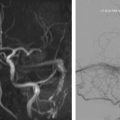It is now understood that complex changes in neural networks underlie the genesis and perception of tinnitus. This issue begins with a discussion of concepts in this regard that have emerged from animal models, clinical studies, and functional brain imaging. A detailed review of the neurotologist’s approach to the patient with tinnitus then follows. The thrust of this issue, however, is in the imaging of the patient with an anatomic, radiologically identifiable, cause of Pulse Synchronous Tinnitus (PST). An overview of the imaging appearances of the more common causes of this condition and a practical approach to the interpretation of imaging studies in the patient with such tinnitus are presented. This review is intended to serve as a handy, practical, and concise summary of the topic. The next few articles discuss in depth the imaging manifestations and endovascular options of some of the more prevalent and sometimes more sinister causes of tinnitus. These include acquired and congenital arterial as well as venous anomalies.
Surgical approaches in the amelioration of tinnitus, with a focus on techniques of sigmoid sinus wall reconstruction, are then discussed in a review that we expect will be of interest to otolaryngologists and neuroradiologists alike. The issue concludes with a review of advanced MR imaging techniques that have demonstrated functional and structural alterations in auditory and nonauditory neural networks in tinnitus sufferers. In summary, we hope that this issue presents a bird’s-eye view of where the field stands today and offers some insights into the work that remains to be done.
First and foremost, we would like to offer our sincere gratitude and appreciation to all the authors that have contributed their excellent work to this issue. We are also grateful to Dr Suresh Mukherji for presenting to us this incredible opportunity and for his guidance. Our heartfelt appreciation for the Elsevier team: John Vassallo, Casey Jackson, Nicole Congleton, and the editorial staff for their help, support, and, most importantly, patience, in the preparation of this issue.
Last, but not least, out personal thanks to our families, for their unending encouragement, patience, and support.
Sincerely,
Stay updated, free articles. Join our Telegram channel

Full access? Get Clinical Tree





